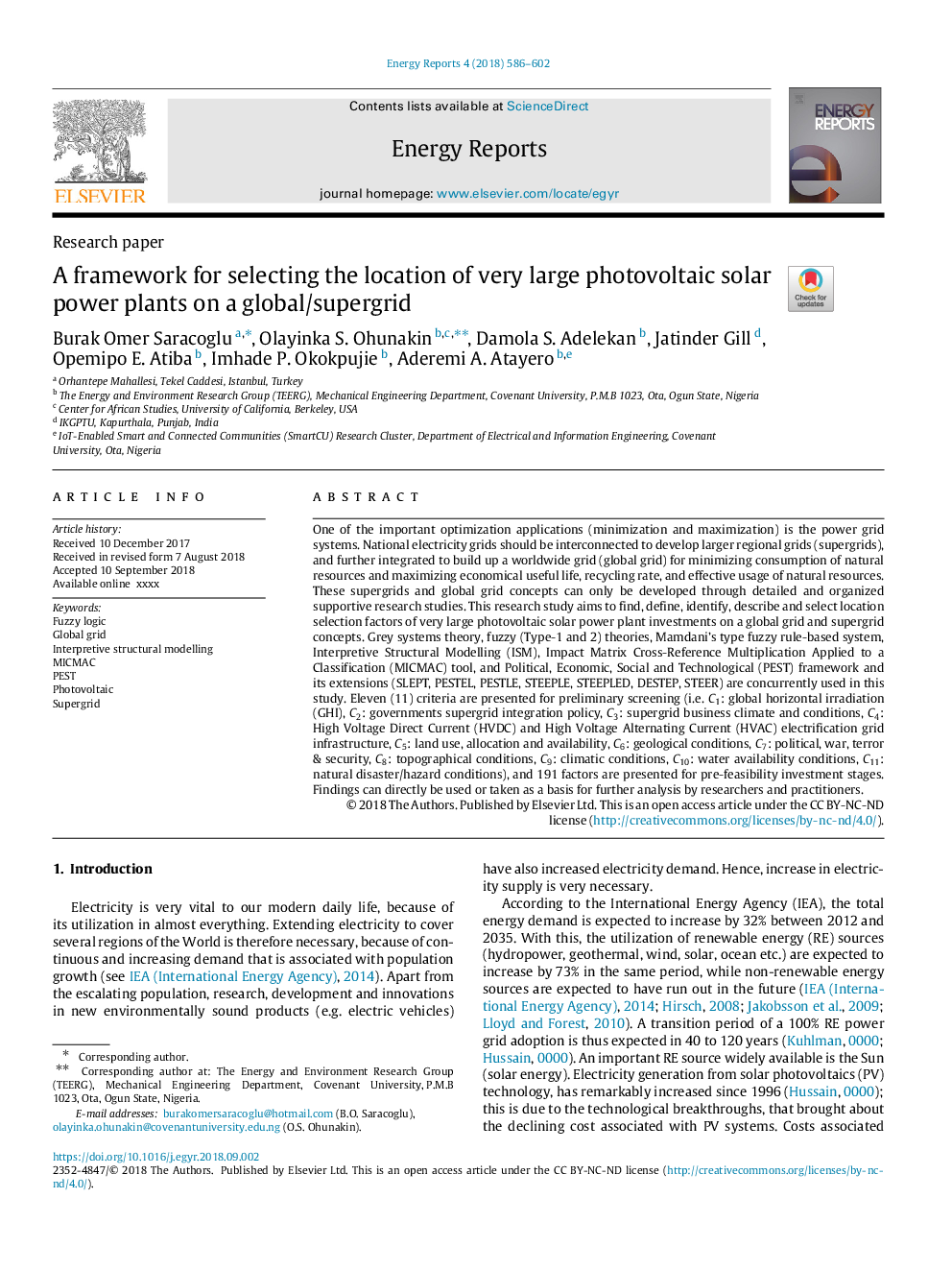| Article ID | Journal | Published Year | Pages | File Type |
|---|---|---|---|---|
| 11007403 | Energy Reports | 2018 | 17 Pages |
Abstract
One of the important optimization applications (minimization and maximization) is the power grid systems. National electricity grids should be interconnected to develop larger regional grids (supergrids), and further integrated to build up a worldwide grid (global grid) for minimizing consumption of natural resources and maximizing economical useful life, recycling rate, and effective usage of natural resources. These supergrids and global grid concepts can only be developed through detailed and organized supportive research studies. This research study aims to find, define, identify, describe and select location selection factors of very large photovoltaic solar power plant investments on a global grid and supergrid concepts. Grey systems theory, fuzzy (Type-1 and 2) theories, Mamdani's type fuzzy rule-based system, Interpretive Structural Modelling (ISM), Impact Matrix Cross-Reference Multiplication Applied to a Classification (MICMAC) tool, and Political, Economic, Social and Technological (PEST) framework and its extensions (SLEPT, PESTEL, PESTLE, STEEPLE, STEEPLED, DESTEP, STEER) are concurrently used in this study. Eleven (11) criteria are presented for preliminary screening (i.e. C1: global horizontal irradiation (GHI), C2: governments supergrid integration policy, C3: supergrid business climate and conditions, C4: High Voltage Direct Current (HVDC) and High Voltage Alternating Current (HVAC) electrification grid infrastructure, C5: land use, allocation and availability, C6: geological conditions, C7: political, war, terror & security, C8: topographical conditions, C9: climatic conditions, C10: water availability conditions, C11: natural disaster/hazard conditions), and 191 factors are presented for pre-feasibility investment stages. Findings can directly be used or taken as a basis for further analysis by researchers and practitioners.
Related Topics
Physical Sciences and Engineering
Energy
Energy Engineering and Power Technology
Authors
Burak Omer Saracoglu, Olayinka S. Ohunakin, Damola S. Adelekan, Jatinder Gill, Opemipo E. Atiba, Imhade P. Okokpujie, Aderemi A. Atayero,
